Class 2: Painting/Drawing/Printing
1/18
There's no tags or description
Looks like no tags are added yet.
Name | Mastery | Learn | Test | Matching | Spaced |
|---|
No study sessions yet.
19 Terms
Key Ideas (4)
How is the meaning of an artwork shaped by how it was made?
Why did the artist choose this specific material over another?
What are the innate qualities of the material?
What method of treatment do these qualities demand/enable?
Where might the work had been completed? (e.g. layering of oil paint couldn’t have taken place en plein air)
What visual (and hence emotional) effects does this enable/preclude?
What method of viewing does this demand? (e.g. from a distance? or up close?)
Svetlana Alpers, 'The Master's Touch: Rembrandt's Enterprise' (4)
Rembrandt's techniques: high impasto, unconventional usage of glaze & gold
High impasto: in highest-lit areas (vs. convention: would appear the most ephemeral as light erases form)
Sometimes worked paint w/ palette knife or fingers
Glaze: to draw attention to dark areas (vs. convention: to create a sense of luminosity & ephemeral movement)
Gold: to emphasise luster & solidity of gold objects depicted
NOT concerned w/ using the monetary value of gold to elevate the value of his painting/for symbolism of status
Not creating ‘expensive illusions of expensive possessions’
Celebration of rough (vs. smooth) painting
Vs. at the time: rough painting unrefined, uncouth behaviour of artist
Rembrandt draws our attention to painting as work done in the studio
Not concerned with narrative & illusion, but ‘describing materials and the way they feel’ through paint
RATHER than creating the illusion of 3-dimensionality/solidity, Rembrandt creates 3-dimensionality/solidity itself
Touch supplements sight as the primary vehicle of human contact, understanding, & love
Ewa Lajer-Burcharth, 'Drawing Time' (5)
Montage > composition
Did NOT draw to fit a preconceived composition
Intervals between frames matter as much as the frames themselves
The r/s between each figure > their r/s to reality
Temporality of Watteau’s drawings did NOT reflect temporality of real life
NOT faithful records of a continuous sitting
Rather, collage of different moments into 1 situational temporality on the page
‘Time materialises in Watteau's work as the basic condition of the medium’
(1) Immediacy of drawing
Unmediated poses; direct observation from nature/life
(2) Idea of the prosthetic
Chalk as an extension of the artist’s hand
Immediacy allows for thinking through the materials: quasi-mechanical quality
(3) Drawing as a process taking place over time
E.g. visible immediacy of hurried strokes; usage of 3 chalks at once
E.g. adding additional strips of paper during the drawing process
E.g. visible weariness & changes in the sitter’s appearance
(4) The internal temporality that a page creates
The shape of the page defines the way the model appears on it
+ repetition of subjects to produce difference (if often minimal), NOT sameness
+ pairing of motifs
= creates a quasi-cinematic effect of spatial & temporal sequence
Invention of the portable watch (late 1700s)
Time as accessible, measurable, & individualised
Shaped the way in which Watteau distributed figures on the page
Skeptical empiricism
(1) All contents of the mind derive from external sensations
Watteau’s:
Sustained commitment to observation
Mistrust of visual given (e.g. the academic pose)
Reluctance to compose a preconceived whole
(2) Personal identity as a collection of different perceptions, in perpetual flux
Watteau’s albums do NOT coalesce into an image of a coherent artistic self
(3) Time as an idea that can only be formed through the experience of particular things/ideas that appear to us in succession
= Watteau’s emphasis on the figure’s existence in its own particular moment, rather than in an imposed narrative time
Watteau's nomadic life: ‘opted out from unity & coherence as a means of self-definition’
His work may have conditioned this
Recording the endless multiplicity of being in the world > a totalising view
Caroline Fowler, 'Introduction to the Art of Paper'
Assumptions/Limitations (1)
Qualities (2)
Historical significance (2)
Assumptions/Limitations of paper
Paper is (apparently) denied of the capability to convey a message
Paper itself is NOT the object of representation
Qualities
Accessibility & ubiquity (by 16th century)
Cheaper than parchment/bronze
Preservative capabilities
More difficult to forge vs. a parchment document
Resists erasure (tears)
Vs. animal skin: could be scraped down & erased, reused
Historical significance
Tool of administration amidst rise of administrative governance & bureaucracy
E.g. in Europe: European notaries’ record-keeping; revival of Roman law
Artistic tool, mark of authenticity
Paper is cheaper = allows for artistic experimentation
Paper as a mark of authenticity
Marks the direct trace of the artist’s hand
E.g. in 16th century: Giorgio Vasari described a Michelangelo drawing as a relic
Direct correlation between Michelangelo’s body & his work on paper
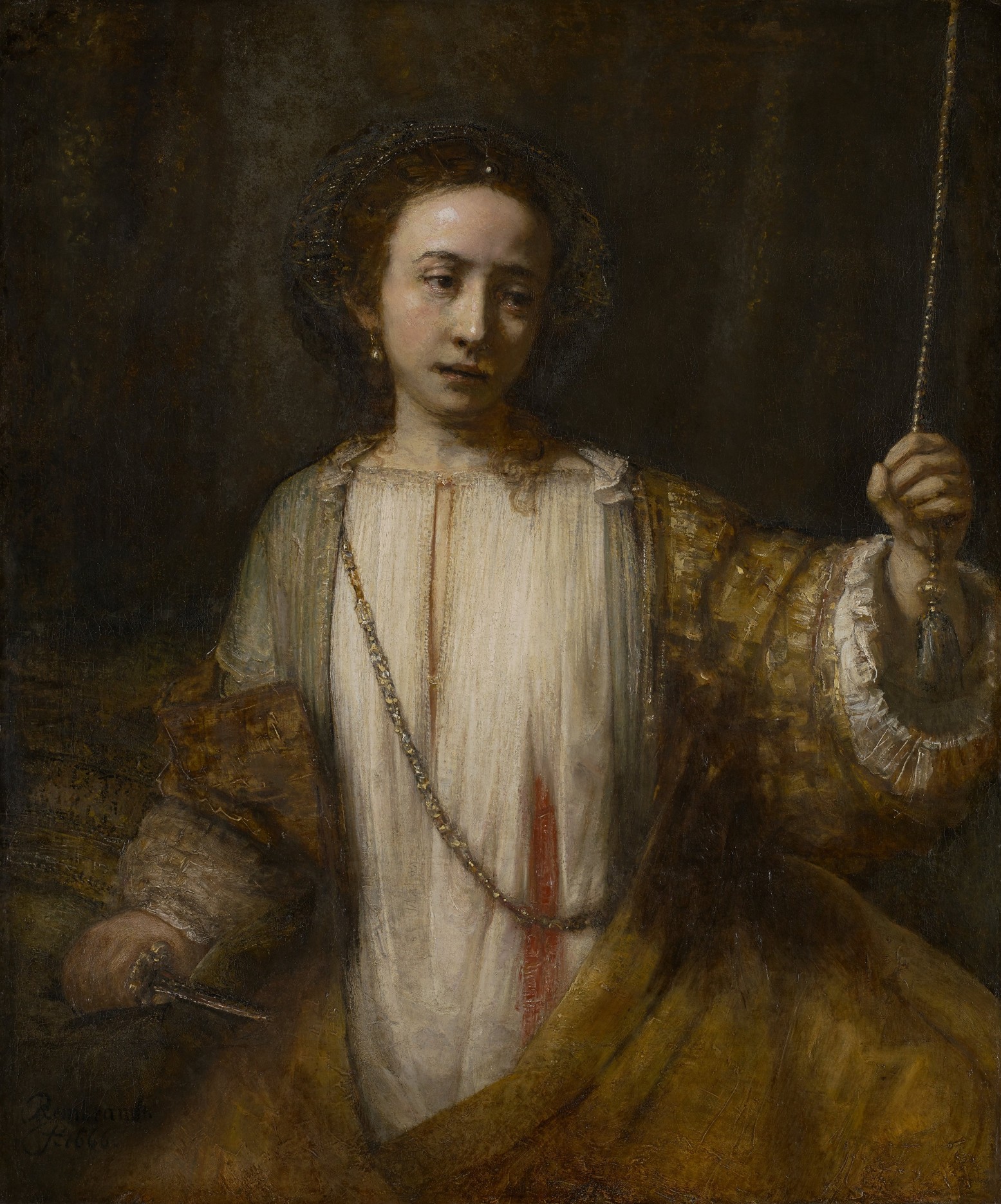
Lucretia (1666), Rembrandt
Characteristic of the ‘rough’ style of painting
Brushstrokes are clearly visible
Exposes the paint & the artist’s process
Painting as a performance - making the studio more visible in the painting
Usage of gold
Materiality of gold chain > formal (illusionistic) detail
Sense of luster, solidity
Appropriately viewed from a distance
Up close, detail & precision are obscured; materiality of paint & the artist’s hand are apparent
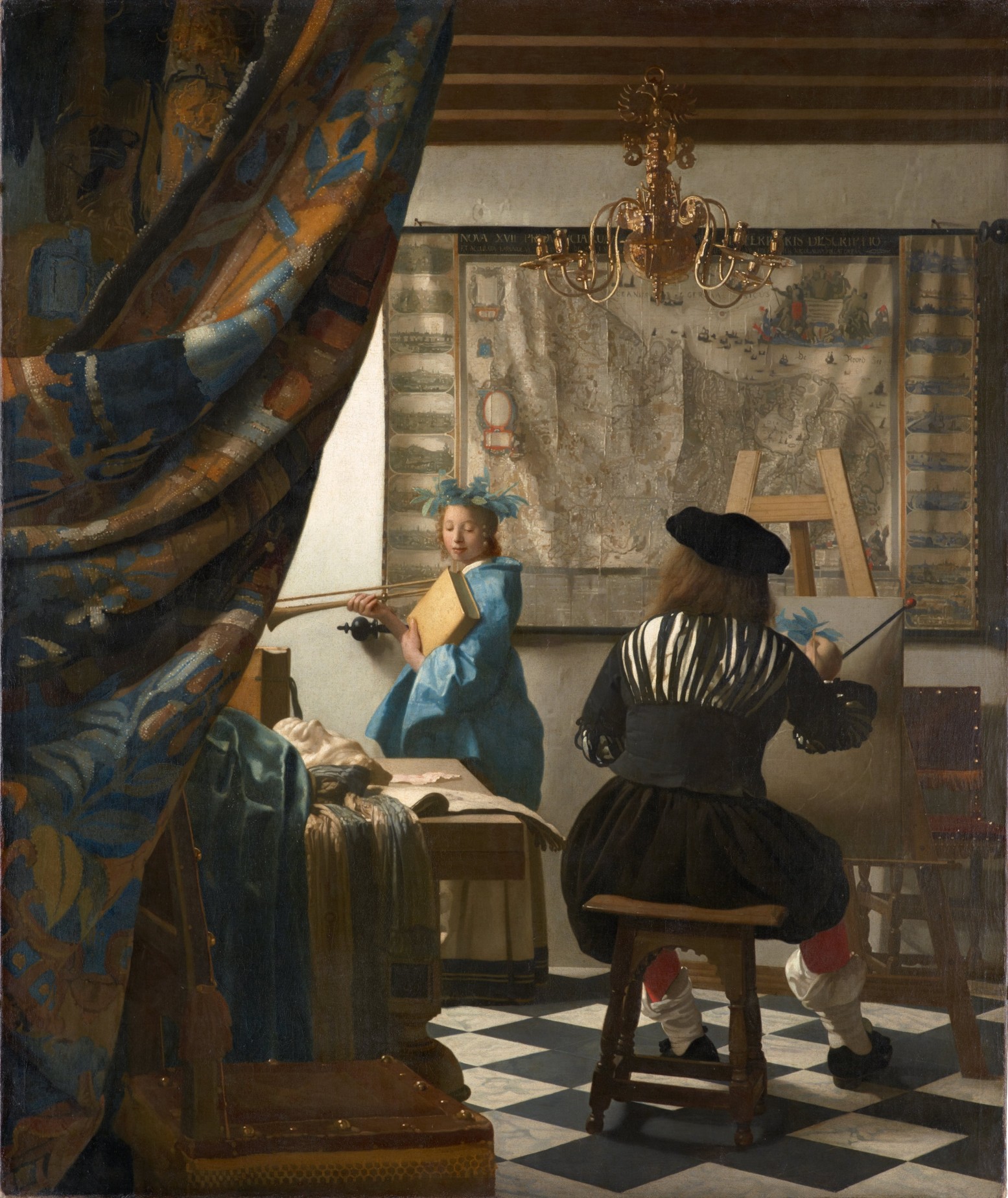
The Art of Painting (1666/68), Johannes Vermeer
Characteristic of the ‘smooth’ style of painting
Each detail is painted meticulously
Brushstrokes are not visible
Concern w/ a convincing illusion > materiality
Appropriately viewed up close
Where minute details can be appreciated
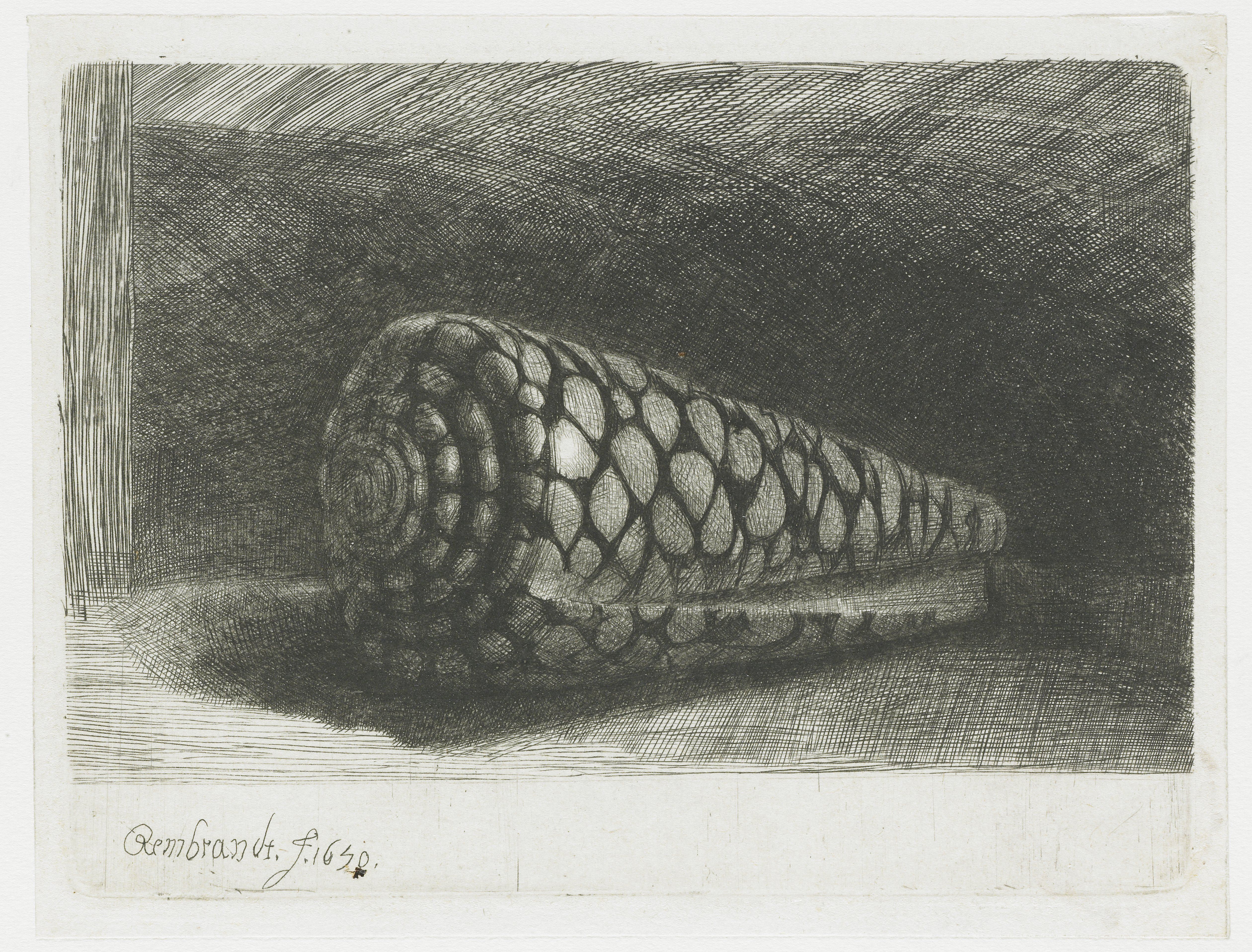
Historical context
Description
Interpretation (1)
The Shell (1650), Rembrandt
Historical context
Etching w/ drypoint & burin
Almost a contradictory impulse
Coarse execution vs. smooth, glossy surface of actual shell
Lines & dots of black vs. pale colours of actual shell
Description
A shell
Iconography: seen as Natural artifice
Nature producing something that looks as if it were crafted by a man
Nature as an artist
Interpretation
NOT trying to conceal the process of artistic creation
Through technique of etching
Intentionally calls attention to the difference between real object & its image
E.g. you can see the amount of time & effort taken to build up the background = necessary for our reading of the object within space
Intention is NOT to display a taste for natural knowledge/the possession of rare & expensive objects (‘expensive illusions of expensive possessions’)
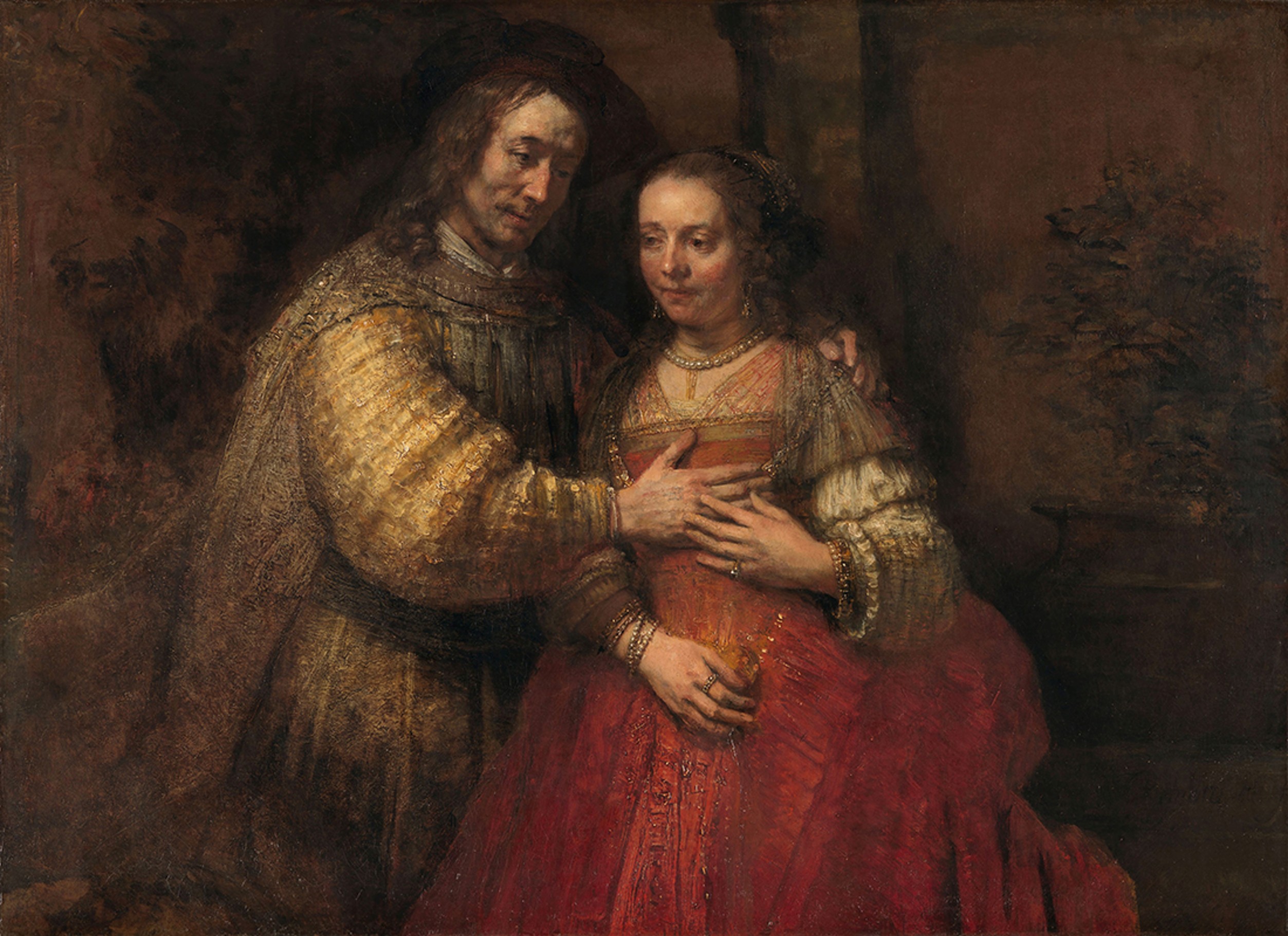
(2)
Portrait of a Couple as Isaac and Rebecca, known as The Jewish Bride (1665-6), Rembrandt
Ambiguity of background
Directs focus to human subjects
Emphasises that this is a painting: background detail has been selectively & intentionally left out by the artist
Calls on our sense of touch
Invites viewers to desire touching the painting
Coarse brushstrokes draw attention to the physical presence of paint on the canvas, and its texture
Allusion to hands
Love between man & woman is demonstrated through overlaying of very large hands
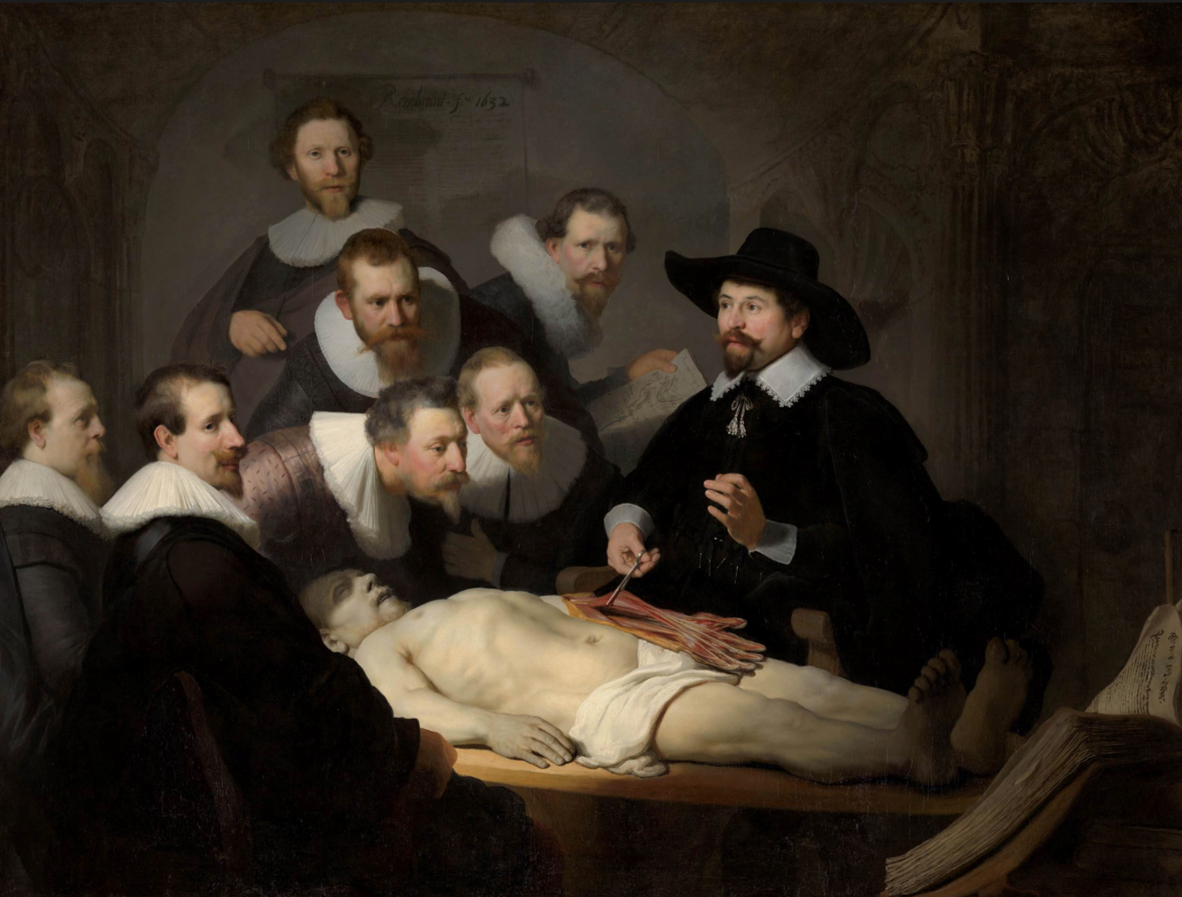
The Anatomy Lesson of Dr Nicolaes Tulp (1632), Rembrandt
Focus on the surgeon’s hand
Near the centre of the painting
Dr Tulp’s left hand raised
Aristotle: the human hand is NOT 1 instrument but many
The physical counterpart of human reason (instrument of the soul/intelligence)
Mutuality of interest between professions
The hand as an instrument for both artists & surgeons
In a time when these professions, being manual, traditionally needed defense against the higher claims made for the intellectual liberal arts
An attempt to define & elevate these professions

Self-Portrait with Two Circles (1665), Rembrandt
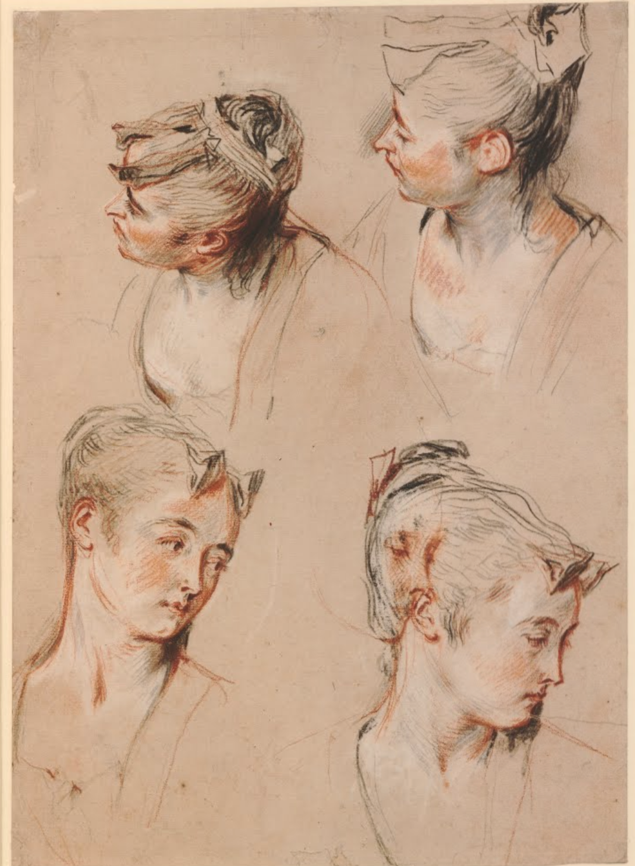
Four Studies of a Woman’s Head, Antoine Watteau

Eight Studies of Women’s and a Man’s Heads, Antoine Watteau
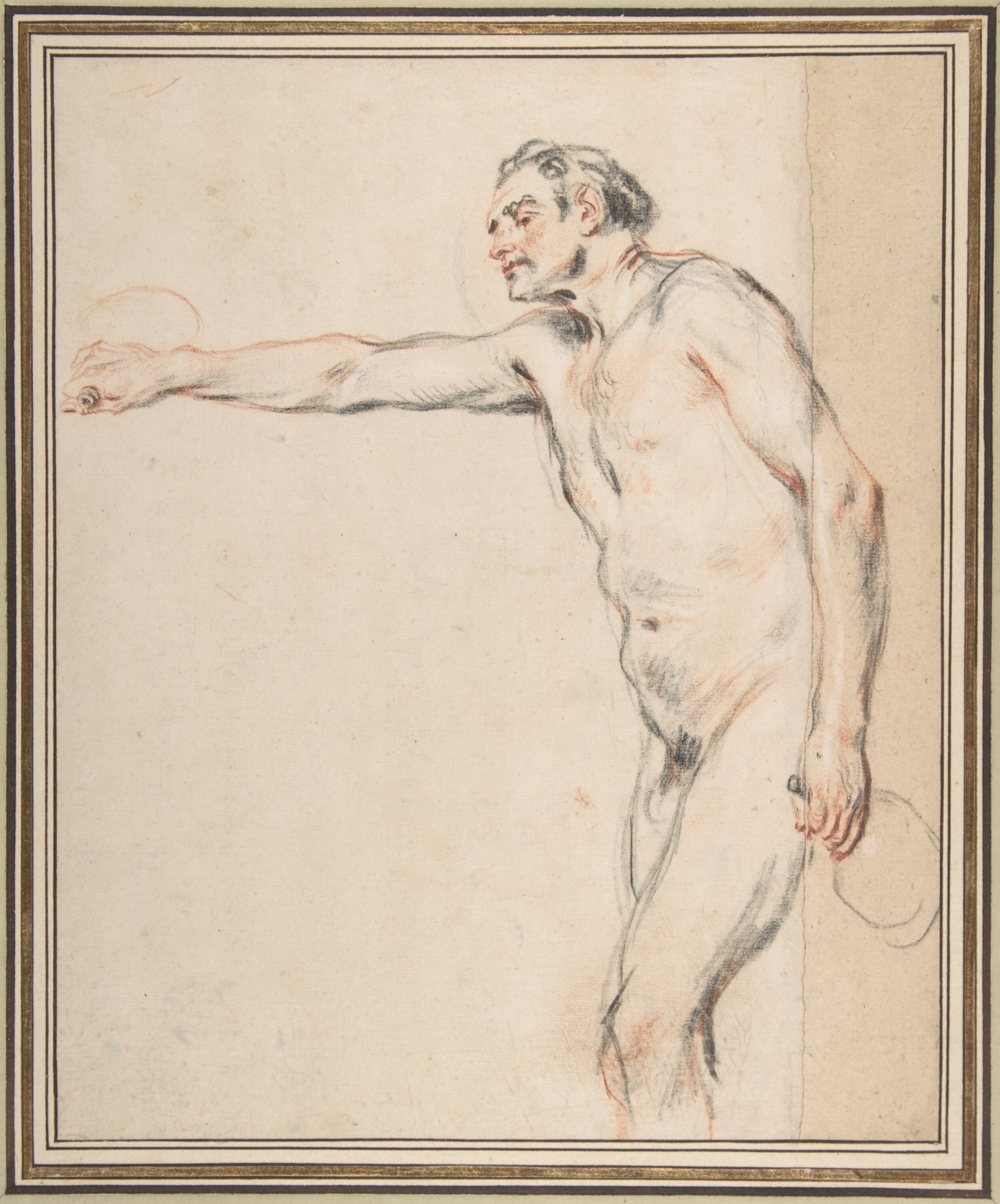
Nude Man Holding a Bottle in Each Hand, Antoine Watteau
Shape of the page defines the way the model appears on it
His body seems to have assumed the paper’s rectilinear shape
Offers an image of posing as much as that of the pose
Duration has inflected the appearance of the subject
(a) E.g. Watteau had to expand the sheet by gluing an extra vertical stripe on the right side to accommodate fully his model’s left arm
(b) E.g. Man’s pose is unmistakably fatigued/bored
Weariness on his face
Slackness of his pose
Open, sketchy outlines = haste
Makes clear the EFFORT of posing
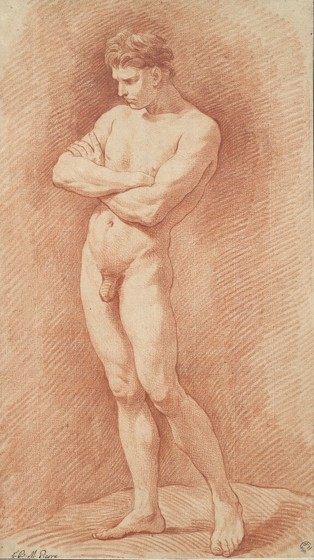
Standing Male Nude with Folded Arms, Edmé Bouchardon
In contrast,
Pose is more idealized
Not slouching
Graceful (e.g. left leg lifting slightly off the ground)
Well-articulated musculature
Tightly contained by an uninterrupted contour
Appears to capture an instantaneous moment in time

Study for a Satyr about to Attack (ca. 1717), Antoine Watteau

Jupiter and Antiope (1715), Antoine Watteau
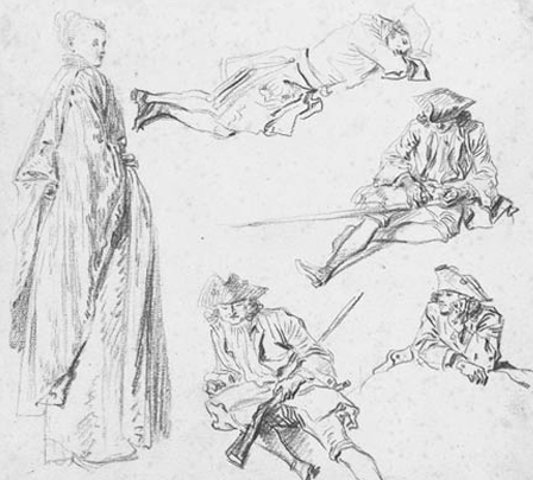
Four Studies of Soldiers at Rest and One of a Standing Woman, Antoine Watteau
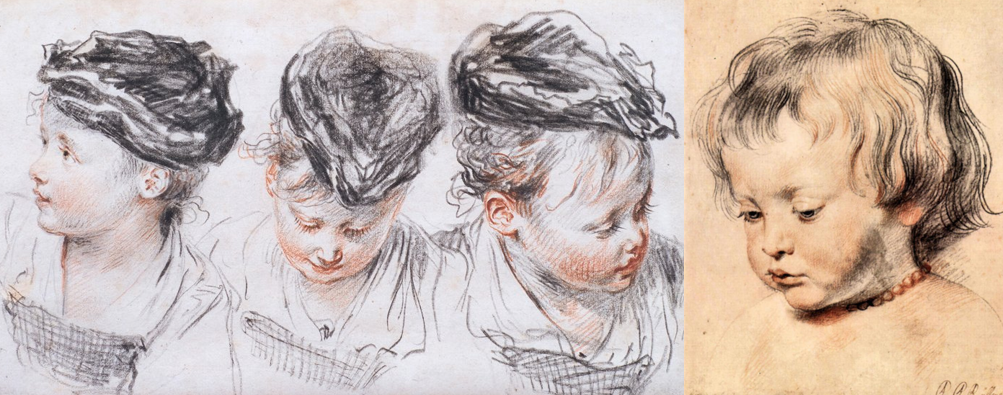
Three Studies of a Young Girl Wearing a Hat, Antoine Watteau
Had to work relatively fast to follow child’s movements
Visible in her hat
‘Oyster’; pluridirectional, multiplied strokes
Agitated, gestural & unruly performance
Sense of movement: vector accentuated by the pointed tip of her hat
Vs. her more softly fleshed out hair & face
Mixture of black & red chalk dragged together = likely held in one hand
Chalk: instantaneous, no drying time
Chalk as an extension of the artist’s fingers
Greater immediacy between the artist & the artwork
Portrait of the Artist’s Son Nicolaas (ca. 1619), Peter Paul Rubens
Trois crayons study (white, black, & red)
Exquisite mimeticism > visible traces of the artist’s hand
Both subject & artist’s hand are well-behaved, constrained
NO sense of movement; idealised form
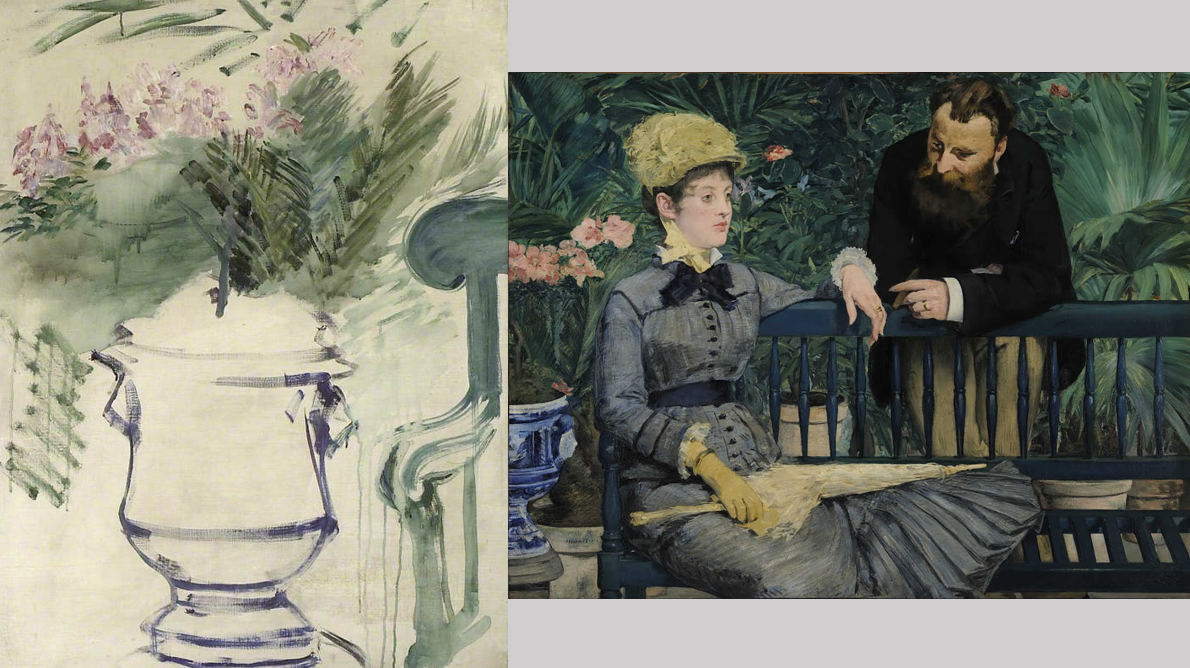
A Garden Urn, Édouard Manet
Historical context
Oil on canvas
Study for ‘In the Conservatory’
Areas of discussion
How did the sketch inform the final work?
Linearities
Colour: blues & greens
What might give away that this was a study?
Form of urn has been directly & roughly painted
Little building up of paint layers
No preliminary sketch, immediacy
Suggests that the urn wasn’t the point of focus, just needed a vague form
Vs. more detail in foliage
Dripping paint
Oil paint was thinned
Suggests that Manet hadn’t intended to layer/build up any paint layers
Would’ve required drying time
How did Manet’s studies challenge conventions of the Salon?
(Lack of) Finish
Sketchniess, done w/ great speed
Painted directly onto the white ground
No attempt to disguise the brushwork
Svetlana Alpers’s Rembrandt’s Enterprise